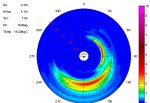Neeves
Well-known member
I've been mulling over how to measure swell height when at sea. Frankly I find it very difficult to arrive at a figure that seems right. The topic is a bit academic - swell height - it is what it is and you cannot do anything about it.
My understanding is that GPS can have the accuracy to a few millimetres, or centimetres. GPS can be used to measure altitude, or could be. Could a GPS be used to measure the difference in height, altitude, of a yacht as the yacht rises and falls over swell?
Jonathan
My understanding is that GPS can have the accuracy to a few millimetres, or centimetres. GPS can be used to measure altitude, or could be. Could a GPS be used to measure the difference in height, altitude, of a yacht as the yacht rises and falls over swell?
Jonathan



